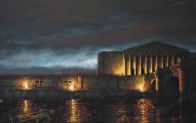


Page


Page
© Luc Dartois - May 2019
updated in April 2020, February 2021

~
~
~
~
~
~
~
~
~

2014-2019 - The Tunnel
2011 - The Banks
2012-2015 - The National Assembly
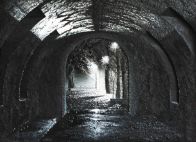
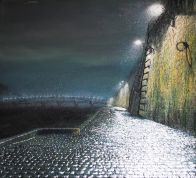
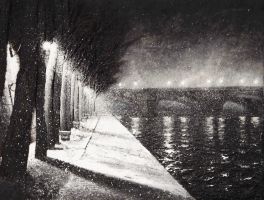
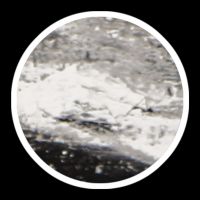
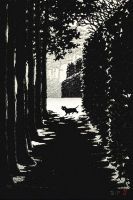
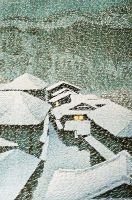
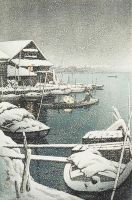
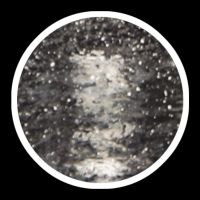
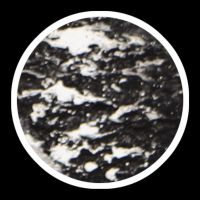
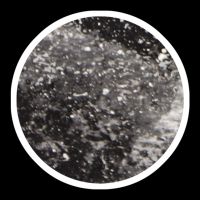
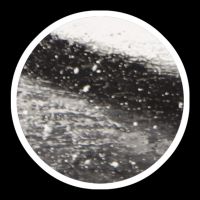
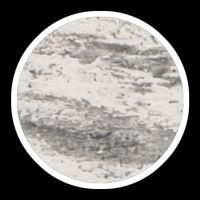

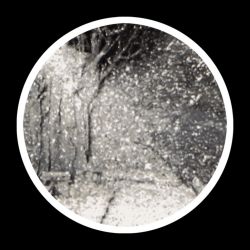
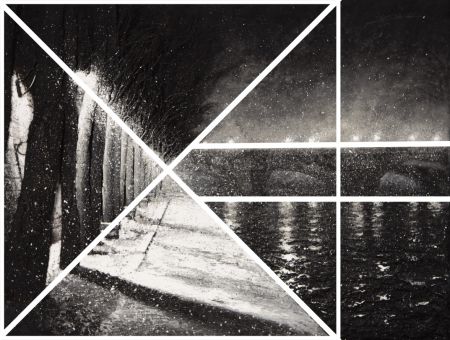
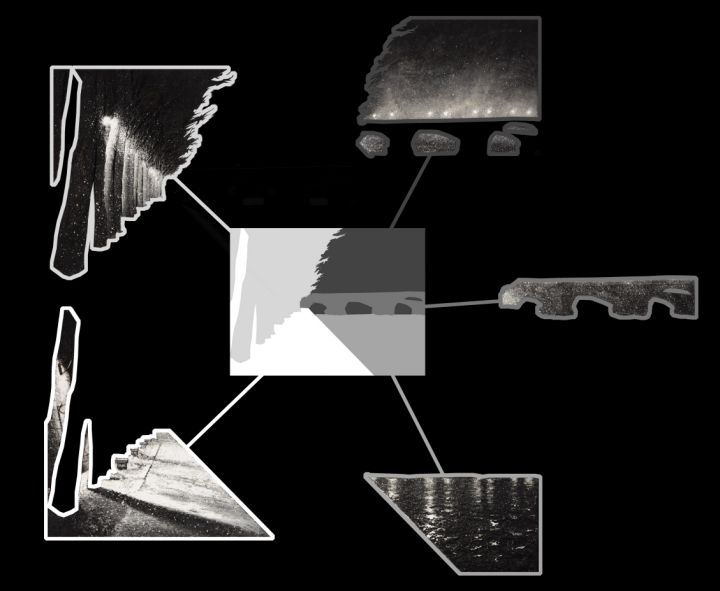
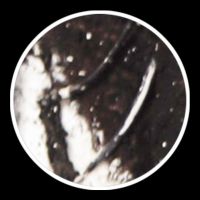
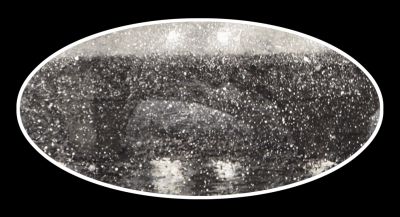

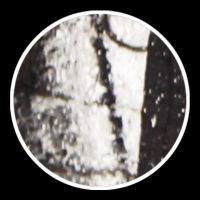


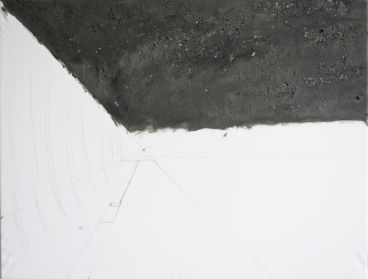
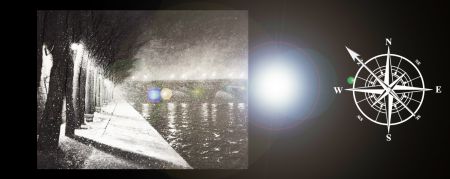

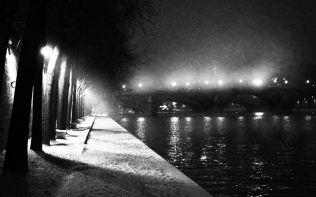
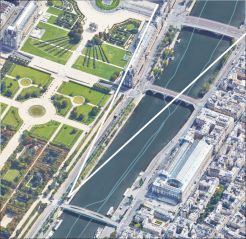
Banks of Seine are a regular source of subjects. Always shown deserted, they carry theyr own symbolism.
Padlocks of lovers in the Pont des Arts can be located at the same place where suicidals are jumping into the River Seine... Shadows and lights never stop to interact each other. There is some destinies that can be only tragic.
"Au fond de la Seine, il y a de l’or
Des bateaux rouillés, des bijoux, des armes…
Au fond de la Seine, il y a des morts
Au fond de la Seine, il y a des larmes"
Lament of the Seine by Maurice Magre
text set to music by Kurt Weill in 1934, sung by Marianne Faithfull in 1996.
Poem suggested by Roselyne Chevalier.
If this canvas should be translated into some sonic equivalents, we would hear only silence, hardly disturbed by the quiet sound of the flakes.
Alone and barely highlighted by a shadow line, a vestige of human activity is remaining in the form of a piece of paper which can represent a poster as well as an abandoned newspaper, a last message almost entirely covered by the snow.
The bank is completly deserted, which is not the case of the original picture showing a silhouette. The falling snow is dense, once again contrary to the original picture. There is no obligation to follow the source image slavishly. This is not a matter of doing photorealism but rather to convey a spirit's vision.
Snow is falling more and more rarely in Paris, two or three days per year in average, one week at the most. This kind of landscape is becoming rarer and there is high chance that it disapear completly in a near future.
Touches are accorded to an already used scheme: diluted and barely apparent when it comes to maintain the textures of the matters, dense with visible relief when it comes to highlight the light.
The canvas is in black and white, with a limited but highly contrasted chromatic scale.
Shadows and lights are balancing each other while interacting with the matters.
Darkest blacks are coming from several sources: a mix of paints and dry pigments in the cotton mass of the sky, some wood and clusters of branches which reliefs are droping real shadows, a mix of dry pigments and resin for the river.
Different lights are responding to these different blacks. These lights are made with a mix of plaster and titanium white dry pigment, which has been prefered to zinc white: lights of the street lamps of the banks and theyr lighting on the snow, distant lights on the bridge which are dissolving in the sky, and lights reflection on water and its reliefs.
Intermediary greys are coming from Humbrol paints with various dilution level.
Atmospheric perspective is rendered par the merging of matters and light as we are moving into the background. The vanishing point is blurred by the snow density, but still represent the only location where it's possible to go.
The background disappears out of sight, leaving uncertainty. No other direction is possible. The wall is blocking the left, on the right lies the dark water body of the river.
Between the agitated aerial world of the moving sky and the dense sleeping world of the deep water, the bridge connect these two universes.
The perspective and the vanishing lines are contained in a square, whose intersection of the diagonals is giving the vanishing point. The mass of the bridge is the only horizontal part of the painting.
The structure of the canvas is simple, with planes defined by theyr respective matters. Matters are organized in four main masses of approximately equivalent surface: cotton, wood, plaster, resin... which gives a great balance to the whole canvas. The bridge is fixing the skyline and stabilize the composition.
Trunks have been recreated with bark pieces assembled to reproduce the original silhouette of the trees. The branches have been bounded one by one starting from the trunks.
The walls and the bank are made of engraved cement mixed with sand, the bridge is made of cement.
Water movements are rendered through a mix of resin and dry pigment laid on an aluminium foil layer sticked on a cement underlayer.
The sky is made of cotton painted in mass.
Few details have been added with metallic stems (ring, street light).
There is almost no pentimenti-traces. Composition lines have been kept close to the first image. The underlayers of matters have been laid on a summary drawing before the laying of the main coats of matters. Relief elements came after: bridge, trees, benches... Theyr positioning has been controled by successive photographies before a definitive sticking.
A rather frontal lighting is recommanded. Work has been done with daylight on the right, South-East exposure.
The painting is 60cm long for 46cm high without frame. It has been made on a prepared off-the-shelf fine-grained canvas on the reverse side of which a list of used components is written, as well as a date and a counter-signature.
Signature has been stamped on the top right in a similar tone as the background.
The canvas has been made after a photography taken ten years earlier. Photography activity has been developed since 2008-2009 at the same time as the comeback in paintings.
Photos are used for composition and lighting works as well as for capturing atmospheres for future subjects.
Interest for black and white photography and its light grown up with the discovery of photographers such as Georges Brassaï, René-Jacques, Harold Burdekin or Fan Ho.
We are standing on the Banks of Seine in Paris just after the Leopold Sedar-Senghor footbridge and facing the Pont-Royal.
The painting is in black and white. It has been made for an exhibition in Japan. It has been built in barely more then a month, which is almost a speed record for canvases of this period. It has been exhibited in New York in April 2019, then in Paris in October 2019 and early March 2020 where it has been sold.
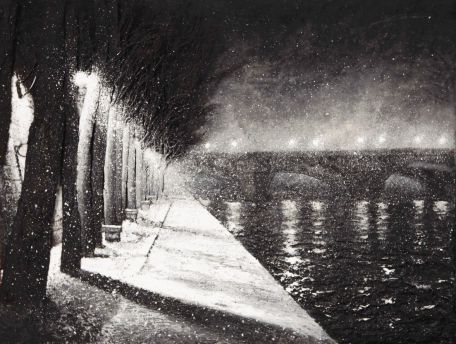
2018 - Banks of Seine, Pont-Royal
On the left a tree line under the lighting of the street lamps, on the center the perspective of the banks under the snow, on the right the River Seine and the reflections of lights in the water, on the background the Pont-Royal bridge. Light reveals a snowy sky.
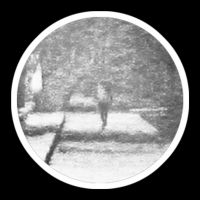
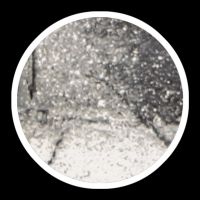






Fr
Eng
Paintings and matters on canvas
Luc Dartois

Pictures, texts, videos, illustration and logos contained on this website are exclusive property of Luc Dartois.
Any other use then strictly private use, any public distribution without author's permission iis prohibited.
Copyright © Luc Dartois